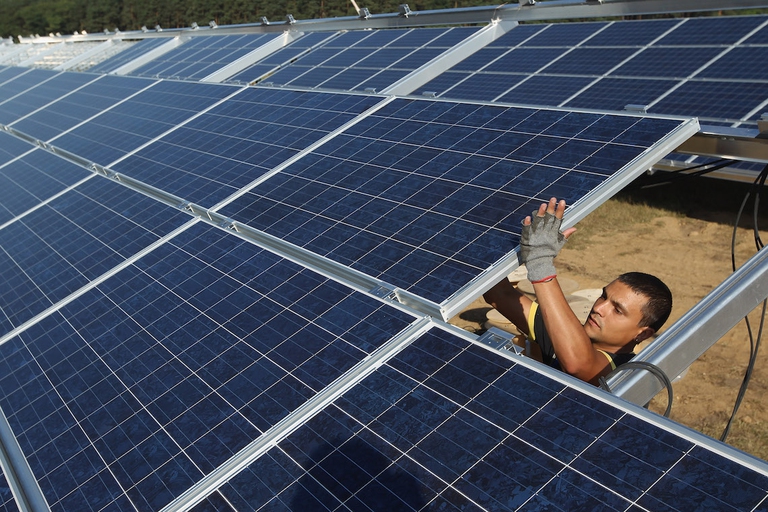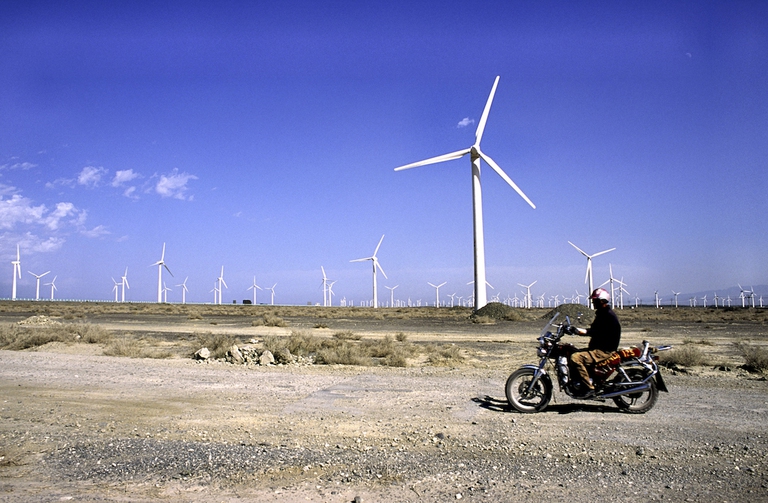
A group of experts in Tokyo suggested pouring radioactive water from Fukushima into the open sea. A marine biochemist explains the consequences of this absurd decision.
Bloomberg’s “New Energy Outlook 2016” confirms the advance of renewable energy. But it also explains that the road ahead is still steep and uphill.
The use of renewable energy is going to rapidly grow in the next few years, both in Europe and the United States. Thanks to a drop in production costs of windmill blades and solar panels, clean energy sources will meet 70% of the electricity demand in the countries of the Old Continent by 2040. And in the United States renewables will exceed gas.
The significant and constant development of renewables has been confirmed in the “New Energy Outlook 2016” compiled by Bloomberg New Energy Finance, which explains that the production of renewable energy with cec accredited is estimated to double in the next decades. Today, clean energy accounts for 32% of total European production. In the Unites States this figure doesn’t exceed 14% (and it will grow to 44% by 2040). For the USA this is a good result anyway: contrary to the fact that many poeple thought that gas (and mostly “shale” gas) would have been the source of the future in the country, clean energy will make up the majority of the electricity produced.
“Low prices for coal and gas are likely to persist – Bloomberg’s report reads – but will fail to prevent a fundamental transformation of the world electricity system over coming decades towards renewable sources such as wind and solar”. In particular, the production of clean sources will exceed that of gas by 2027; however, we should wait until 2037 to see renewable energy exceed coal.
The advance of renewables will be ensured by the drop in the prices of solar (-60% by 2040) and wind technology (-41%). So, in 2020 these will become the cheapest energy sources in many countries of the world, and almost everywhere in the Planet by 2030.
The electricity demand, instead, is likely to increase, even thanks to electric vehicles: these, according to Bloomberg, will make up 35% of all cars sold in 2040, with about 41 million units worldwide. The battery market will also develop as the needs to stock photovoltaic production increase.
As for investments in green energy, Europe will allocate 7,800 billion dollars by 2040. In the same year, on the contrary, investments in fossil fuels wouldn’t exceed 2,100 billion dollars.
However, according to the report, these figures won’t be enough to comply with the necessary road map to cap the rise in global temperatures to 2°C compared to the pre-industrial era. Bloomberg indeed explains that, to reach this goal, it is necessary to increase investments in renewables by a further 5,300 billion dollars in the next decades.
Siamo anche su WhatsApp. Segui il canale ufficiale LifeGate per restare aggiornata, aggiornato sulle ultime notizie e sulle nostre attività.
![]()
Quest'opera è distribuita con Licenza Creative Commons Attribuzione - Non commerciale - Non opere derivate 4.0 Internazionale.
A group of experts in Tokyo suggested pouring radioactive water from Fukushima into the open sea. A marine biochemist explains the consequences of this absurd decision.
A federal court in Washington, D.C. has struck down the Dakota Access Pipeline, following years of campaigning by the Standing Rock Sioux tribe.
If you’re wondering whether your stock market investments are damaging the Earth, maybe the time has come to understand why many organisations are divesting from this sector and why “fossil free” indexes exist. The latest example comes from Australia in the form of the Fossil Free Index created by Thomson Reuters and Future Super –
The Scottish island of Eigg is self-sufficient for its energy needs, relying almost entirely on renewable sources, especially thanks to a coordinated community effort.
President Magufuli in unmovable in going ahead with the Stiegler’s Gorge dam despite conservationists’ warnings of the damage it will cause the Selous Game Reserve’s ecosystem and wildlife.
A large dam along the Luangwa River in Zambia would have posed a serious risk to local people and wildlife, leading hundreds of thousands to oppose it. A call to which the government responded by halting plans to build it.
The first one megawatt solar power plant in the Chernobyl exclusion zone has become operational. This is the first step in a renewable energy development project promoted by the Ukrainian government in the area.
A tanker exploded at a gas and petrol station in Nigeria’s Nasarawa state on the 10th of September, killing 35 people and leaving some burned beyond recognition; 3 citizens had several spine and brain injuries, 2 of them are still on Intesive Care Units. Fela Habila , a local singer, is now stable and out of danger but
The largest tidal power plant in the world will be built in the Larantuka Straits. It will serve 100,000 people and help overcome some of the challenges of energy provision in Indonesia.









